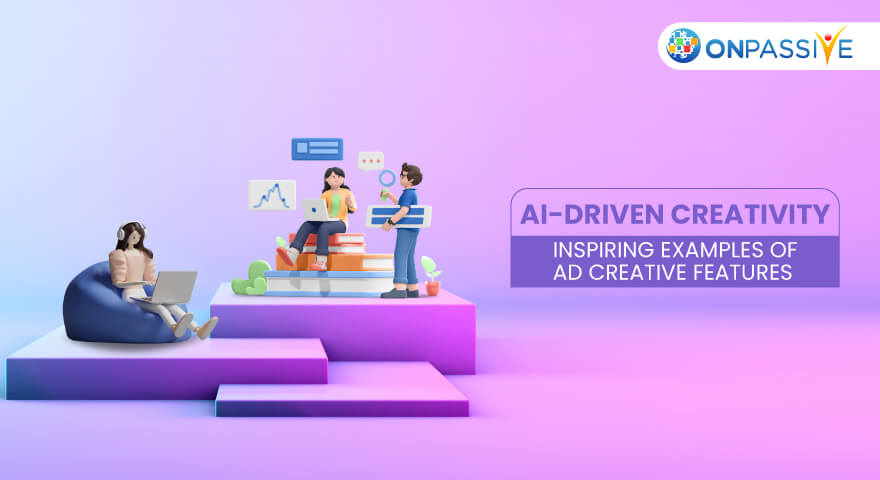Introduction
In the ever-evolving landscape of video games, Artificial Intelligence (AI) has emerged as a powerhouse technology that is not just shaping the future of gaming but redefining it. AI is no longer just a buzzword; it’s a crucial component that enhances gameplay, immerses players in realistic virtual worlds, and revolutionizes how games are developed and experienced. In this article, we’ll delve into the multifaceted role of AI in video games, exploring how it’s transforming the industry and delivering unprecedented gaming experiences.
AI’s Game-Changing Evolution:
The journey of AI in video games is akin to the protagonist’s transformation in an epic RPG. It started as a humble companion, evolved into a reliable ally, and has now ascended to the role of a game-changing hero, redefining the entire gaming landscape.
Beyond the Buzzword:
Indeed, AI is no longer a mere buzzword; it’s the beating heart of modern gaming. The algorithms that power AI have transcended novelty, becoming an integral part of game development. Their impact reverberates across every facet of gaming, from the mechanics that govern the gameplay to the meticulously crafted virtual worlds that players explore.
AI: The Master of Immersion:
One of AI’s most remarkable contributions is its ability to immerse players in virtual worlds that feel not just tangible but living and breathing. Gone are the days of predictable scripted sequences. AI transforms NPCs into sentient beings with adaptive behaviors, challenging players in ways that feel organic and dynamic. The line between reality and the game world blurs as AI NPCs respond intelligently to player choices, creating an unparalleled sense of immersion.
Procedural Magic:
AI also wields its magic in the creation of game worlds. Procedural Content Generation, a concept fueled by AI algorithms, ensures that no two gaming experiences are alike. From the jagged landscapes of survival games to the intricate architecture of sprawling cities, AI weaves intricate tapestries of virtual realms, each unique and captivating. It’s like having an infinite canvas of possibilities, where AI paints breathtaking landscapes and populates them with diverse ecosystems and challenges.
From Pixels to Realism:
The realism AI brings to gaming is undeniable. With Deep Learning Super Sampling (DLSS) and advanced physics engines, games have shed the pixelated past and embraced stunning visual fidelity. AI algorithms predict and fill in details, creating visuals that approach the photorealistic. The rustling of leaves, the flow of water, and the destruction of buildings all feel as authentic as they look, thanks to AI’s touch.
Player-Centric AI:
AI is not just about enhancing the gaming world but also about adapting it to each player. It’s the ultimate personalization tool. By analyzing player behavior, AI can make split-second decisions to adjust gameplay, providing tailored challenges and hints to keep players engaged. It’s like having a game master who tailors the adventure just for you, ensuring that every moment is a memorable one.
The Future Unfolds:
As we peer into the future, AI’s role in gaming is set to expand further. Predictive AI could anticipate player actions, providing responsive and immersive experiences. Emotion-detecting AI may fine-tune gameplay based on a player’s mood, ensuring emotional resonance. With AI merging with VR and AR technologies, the boundaries of gaming will stretch even further, ushering in an era of unprecedented immersion.
In essence, AI’s multifaceted role in video games has evolved from a supporting character to a central protagonist. It’s rewriting the script, crafting immersive experiences, and taking players on journeys of unprecedented depth and complexity. As AI continues to evolve, so too will the possibilities in gaming, promising a future where boundaries are pushed, horizons expanded, and the gaming experience elevated to new heights.
For additional details, consider exploring the related content available here The Benefits of Playing Video Games
The Brain Behind the Bots: AI in NPCs
One of the most noticeable impacts of AI in video games is its role in Non-Player Characters (NPCs). NPCs are essential to the gaming experience, serving as adversaries, allies, or quest-givers. In the past, NPCs were often scripted with predictable behaviors, making encounters feel scripted and rigid. AI changes the game, quite literally.
AI’s influence on Non-Player Characters (NPCs) is nothing short of revolutionary, fundamentally reshaping the way we interact with virtual worlds:
Dynamic and Adaptive Behavior: AI-powered NPCs exhibit dynamic, adaptable behaviors that respond to player actions and decisions. They can learn from the player’s strategies, adapt to changing circumstances, and provide a more engaging and unpredictable gaming experience. Whether it’s a foe who learns to anticipate your tactics or an ally who adjusts their actions based on your choices, AI-driven NPCs enhance immersion.
Realistic Social Interactions: AI enables NPCs to engage in more realistic social interactions. Players can have meaningful conversations, negotiate with characters, and form relationships that affect the game’s outcome. This level of depth in social interactions makes the gaming experience more emotionally resonant and narrative-driven.
Advanced Enemy AI: AI-driven adversaries are no longer bound by rigid patterns. They can employ tactics, coordinate with fellow enemies, and adapt to the player’s strengths and weaknesses. This makes combat encounters more challenging and strategic, as players must devise new strategies to overcome AI opponents.
Quest and Storytelling: AI can dynamically generate quests and storylines based on the player’s choices and actions. This procedural storytelling creates a sense of agency, where players feel that their decisions shape the game’s narrative. The branching storylines and multiple endings encourage replayability.
Character Development: NPCs with AI can undergo character development throughout the game. Their personalities, beliefs, and relationships can evolve based on interactions with the player. This leads to nuanced and multifaceted characters that players can genuinely care about.
Companions and Sidekicks: AI-driven companions in games offer more than just combat support. They can have their own goals, motivations, and arcs. Players may find themselves forming emotional bonds with these virtual companions, adding emotional depth to the gaming experience.
Natural Language Processing: AI-powered NPCs can understand and respond to player input using natural language processing. This eliminates the need for predefined dialogue options, allowing players to engage in open-ended conversations, ask questions, or make choices that reflect their own personalities.
Enhanced Immersion: The lifelike behaviors and interactions of AI-driven NPCs enhance immersion by creating a believable virtual world. Players can become deeply engrossed in the game’s universe, blurring the line between fiction and reality.
Emergent Gameplay: AI-driven NPCs contribute to emergent gameplay experiences. Unscripted events, unexpected alliances, and uncharted paths can emerge organically based on AI interactions, providing endless possibilities for player-driven stories.
Personalized Challenges: AI can tailor challenges to individual player skill levels. This ensures that the gaming experience remains engaging for both newcomers and seasoned players, striking a balance between accessibility and difficulty.
Continuous Improvement: AI’s adaptability allows developers to fine-tune and improve NPCs post-launch. Through updates and patches, NPCs can become even more sophisticated, responding to player feedback and evolving alongside the gaming community.
In sum, AI’s impact on NPCs in video games transcends scripted behaviors and ushers in a new era of dynamic, immersive, and emotionally resonant gaming experiences. As AI technologies continue to advance, we can anticipate even more profound transformations in how NPCs shape the stories and worlds of video games, offering players unprecedented levels of interactivity and engagement.
You can also read more about this here: Inworld – The most advanced Character Engine for AI NPCs

AI-Generated Worlds: Procedural Content Generation
AI is not limited to enhancing the characters in video games; it can also generate entire worlds. Procedural Content Generation (PCG) powered by AI algorithms is transforming game development.
AI’s transformative power in the gaming industry extends far beyond character enhancement; it’s fundamentally reshaping how game worlds themselves are created and experienced. Procedural Content Generation (PCG), driven by advanced AI algorithms, represents a groundbreaking shift in game development. Here’s a closer look at how AI is revolutionizing the creation of entire game worlds:
Infinite Variety: AI-powered PCG algorithms enable developers to generate vast and diverse game worlds that seemingly stretch to infinity. These algorithms can create landscapes, terrain, cities, dungeons, and even entire planets with an astonishing level of detail and complexity. As a result, players can explore unique, never-before-seen environments in each playthrough, enhancing replayability and player engagement.
Efficiency and Scale: Traditional game development often involves manually crafting every element of a game world, a time-consuming and resource-intensive process. AI-powered PCG drastically increases development efficiency and scalability. Developers can generate massive worlds with minimal human intervention, freeing up creative resources for other aspects of game design.
Realism and Immersion: AI-generated worlds are not only expansive but can also achieve a level of realism that was previously challenging to attain. Algorithms can simulate natural processes, such as weather patterns, ecosystems, and geological formations, creating immersive, living worlds that react dynamically to player actions and environmental changes.
Adaptive Gameplay: AI-driven PCG doesn’t just create static environments; it can also adapt game worlds based on player choices and preferences. This adaptability enables dynamic storytelling, where the game responds to individual player decisions, ensuring a more personalized and engaging experience.
Rapid Iteration: Game development often involves testing and iteration. AI-powered PCG accelerates this process by allowing developers to generate and assess different game world iterations quickly. This rapid iteration fosters innovation and experimentation, leading to more captivating and unique game experiences.
Reduced Development Costs: Automating content generation through AI can significantly reduce development costs. Smaller indie studios, in particular, benefit from these cost savings, enabling them to compete with larger developers in creating expansive game worlds.
Endless Exploration: AI-generated worlds encourage players to explore, discover, and uncover secrets in a way that is both intriguing and satisfying. The promise of never knowing what lies around the corner or over the next hill is a powerful motivator that keeps players engaged and invested in the game.
Cross-Genre Application: AI-powered PCG is not limited to a specific game genre. It can be applied to various genres, from open-world adventures to strategy games, enabling developers to experiment with diverse gameplay experiences.
In conclusion, AI’s role in procedural content generation is revolutionizing the gaming industry by providing developers with powerful tools to create expansive, immersive, and adaptive game worlds. This innovation is reshaping player expectations, pushing the boundaries of what’s possible in gaming, and ensuring that each playthrough is a unique adventure. As AI continues to advance, we can anticipate even more remarkable developments in game world generation, opening up exciting possibilities for the future of interactive entertainment.
If you’d like to dive deeper into this subject, there’s more to discover on this page: AI in Gaming | 5 Biggest Innovations (+40 AI Games) | Engati

AI-Enhanced Realism: Graphics and Physics
AI plays a pivotal role in elevating the realism of graphics and physics simulations in video games.
AI’s contribution to video game realism extends far beyond just graphics and physics simulations. Here’s a more comprehensive look at how AI enhances various aspects of gaming:
Graphics Enhancement: AI-powered techniques like ray tracing and upscaling algorithms significantly improve the visual quality of games. Ray tracing enhances lighting, shadows, and reflections, creating more realistic and immersive environments. Upscaling algorithms use machine learning to upscale lower-resolution textures, making them appear sharper and more detailed.
Physics Simulation: AI-driven physics simulations go beyond standard physics engines by providing more accurate and dynamic interactions within the game world. For instance, AI can simulate complex natural phenomena like fluid dynamics, soft-body physics, and destruction physics, making in-game interactions more lifelike.
NPC Behavior: AI governs the behavior of non-player characters (NPCs) in games. Advanced AI algorithms enable NPCs to exhibit realistic decision-making, adapting to changing circumstances and player actions. This creates more challenging and immersive gameplay experiences, as NPCs react intelligently to the player’s actions.
Dynamic World Building: AI can dynamically generate game worlds and levels, ensuring that each playthrough feels unique. Procedural content generation powered by AI algorithms can create vast, detailed landscapes, dungeons, and environments, enhancing replayability.
Voice and Speech Synthesis: AI-driven voice and speech synthesis technologies enable the creation of realistic character dialogues and interactions. This makes in-game conversations and storytelling more engaging and natural, contributing to immersive narratives.
Adaptive Difficulty: AI can adjust game difficulty in real-time based on the player’s performance and skill level. This ensures that the game remains challenging but not frustrating, offering a customized experience to individual players.
Anti-Cheat Systems: AI plays a crucial role in detecting and preventing cheating in multiplayer games. Machine learning models can analyze player behavior to identify suspicious patterns, such as aimbot usage or speed hacks, and take appropriate actions to maintain fair gameplay.
Player Analytics: Game developers use AI to analyze player behavior and preferences, gaining insights into how players interact with their games. This data-driven approach helps in tailoring future updates, content, and features to better suit player interests.
Natural Language Processing: AI-powered chatbots and virtual assistants can enhance player support and interaction within games. Players can ask questions, seek guidance, or engage in conversations with AI characters, enhancing the overall gaming experience.
Game Testing and Debugging: AI-driven automation tools assist in game testing by performing repetitive tasks and identifying bugs and glitches efficiently. This accelerates the development process and leads to more stable game releases.
Real-time Translation: AI can facilitate real-time language translation in multiplayer games, enabling players from different regions to communicate effectively and collaborate in a shared gaming experience.
Content Recommendations: AI algorithms analyze player preferences and behavior to offer personalized game recommendations and in-game content suggestions, enhancing player engagement and retention.
Narrative Generation: AI can assist in generating dynamic narratives within games, adapting storylines based on player choices and actions, creating a more interactive and immersive storytelling experience.
In summary, AI’s role in video games extends across multiple facets, enhancing realism, immersion, and player engagement. As AI technologies continue to advance, the potential for even more sophisticated and realistic gaming experiences is on the horizon, promising exciting developments in the future of gaming.
Looking for more insights? You’ll find them right here in our extended coverage: The Unfolding Saga of AI in Gaming: An Interactive Odyssey

Player Personalization: AI in Game Design
AI doesn’t just enhance gameplay; it also personalizes the gaming experience.
Personalization: Gaming’s Crown Jewel
AI’s role in gaming extends beyond mere enhancement; it acts as the architect of personalized experiences, turning every gaming session into a bespoke adventure.
The Tailored Challenge:
Imagine a game that feels like it was designed just for you. AI analyzes your gameplay patterns, skill level, and preferences, ensuring that every challenge you face is finely tuned to your abilities. Whether you’re a novice explorer or a battle-hardened veteran, the AI adjusts the game’s difficulty dynamically. No longer will you encounter insurmountable obstacles or tedious trivialities. Instead, every encounter becomes a precisely crafted challenge that keeps you engaged and exhilarated.
Hints and Guidance:
AI also serves as your mentor in the digital realm. When you find yourself stuck in a labyrinthine dungeon or facing an enigmatic puzzle, the AI steps in with intuitive hints and guidance. It understands when you’re in need of assistance, offering subtle nudges rather than blatant spoilers. The frustration of being stuck in a game for hours on end is replaced by a sense of progress and achievement.
Narrative Weaving:
In the realm of storytelling, AI takes on the role of a master storyteller who weaves narratives tailored to your choices. Your decisions shape the game world, altering its direction and outcomes. Games like “The Witcher 3” or “Detroit: Become Human” are prime examples of AI-driven narratives that respond to your choices, resulting in a multitude of branching storylines and emotional connections.
A Game World That Knows You:
AI’s personalization doesn’t stop at gameplay mechanics; it extends to the game’s very fabric. The world you explore is not just dynamic but also aware of your presence. NPCs remember your actions, and your reputation in the virtual world evolves based on your decisions. It’s a level of immersion that transcends traditional gaming, as AI ensures that you’re not just a player but a central character in a living, breathing universe.
Endless Adventure:
Perhaps the most exciting aspect of AI-driven personalization is the promise of endless adventures. As you embark on multiple playthroughs, the AI adapts, offering fresh challenges and narrative twists. Each playthrough feels like a unique journey, unveiling new facets of the game world, and enticing you to explore every nook and cranny.
The Future of Personalization:
The future holds even greater potential for AI-driven personalization. Emotion-detecting AI might gauge your mood and adjust the game’s atmosphere and soundtrack accordingly, ensuring that every moment resonates with your feelings. AI could even craft entirely new game experiences based on your preferences, offering a never-ending supply of gaming content that caters to your tastes.
In the world of gaming, AI has evolved from being a passive observer to an active participant, customizing every aspect of your experience. It’s a revolution that turns each game into a unique journey, crafting adventures that are not just played but lived. The era of personalized gaming has dawned, promising a future where every player is the hero of their own story.
For a comprehensive look at this subject, we invite you to read more on this dedicated page: AI in Gaming | 5 Biggest Innovations (+40 AI Games) | Engati

AI-Enhanced Multiplayer: Matchmaking and Anti-Cheating
AI’s role extends to multiplayer gaming, where it ensures fair and enjoyable experiences.
AI’s role in multiplayer gaming is pivotal, extending far beyond ensuring fairness and enjoyment. Here’s how AI is shaping the multiplayer gaming landscape:
Matchmaking and Balancing: AI algorithms are instrumental in matchmaking players of similar skill levels, creating balanced and competitive matches. This enhances the overall gaming experience by preventing one-sided battles and frustration. AI continuously evaluates player performance and adapts matchmaking parameters for better balance.
Anticheat Systems: AI-powered anticheat systems are crucial in maintaining the integrity of multiplayer games. They analyze player behavior, detect suspicious patterns, and identify cheaters or hackers. This ensures a level playing field and preserves the competitive spirit of the game.
Behavioral Insights: AI analyzes player behavior, not only to detect cheating but also to improve game design. It provides insights into how players engage with the game, helping developers fine-tune gameplay mechanics, level design, and in-game economics to enhance player engagement.
Dynamic Game Worlds: AI-driven dynamic game worlds add depth to multiplayer experiences. NPCs, creatures, and environmental elements can react to player actions and interactions, creating a living, breathing world where unexpected events and opportunities arise.
Personalized Content: AI tailors multiplayer experiences to individual players. This includes recommending game modes, maps, and challenges based on a player’s preferences and skill level. Personalization enhances player engagement and encourages exploration of different aspects of the game.
Voice and Chat Assistants: AI-powered voice and chat assistants facilitate communication and coordination among players. They can provide real-time translations, transcriptions, and voice commands, making multiplayer gaming more accessible and inclusive for players from diverse backgrounds.
Realistic NPCs: In multiplayer games with cooperative or competitive modes, AI-controlled NPCs can add depth and challenge to the gameplay. These NPCs can mimic human behavior, making interactions with them feel natural and unpredictable.
Player Insights: AI analyzes player data to provide insights into gaming sessions. Developers can use this information to enhance player experiences, address pain points, and optimize game mechanics. Insights also inform decisions about updates and content expansions.
Content Generation: AI can generate new content, such as maps, quests, or challenges, to keep multiplayer games fresh and engaging. This content generation ensures that players have a constant stream of new experiences to explore.
Player Behavior Moderation: AI can help moderate player behavior in multiplayer environments. It can detect and address toxic or offensive language, behavior, or interactions, fostering a more respectful and enjoyable gaming community.
Player Feedback Integration: AI can integrate player feedback into game development processes. By analyzing player comments and suggestions, developers can make informed decisions about future updates and prioritize features that resonate with the player community.
Spectator Enhancements: For esports and competitive gaming, AI-driven camera systems provide dynamic and engaging spectator experiences. These systems follow the action, highlight key moments, and offer insightful analysis, enhancing the viewing experience for esports fans.
In conclusion, AI’s role in multiplayer gaming extends well beyond ensuring fairness and enjoyment. It permeates various aspects of multiplayer experiences, from matchmaking and anticheat systems to content generation and player behavior analysis. As AI technologies continue to advance, multiplayer gaming is poised to become more immersive, personalized, and engaging for players worldwide, driving innovation in the industry.
If you’d like to dive deeper into this subject, there’s more to discover on this page: AI and the Future of Gaming: An Industry in Flux | by Bisma Farrukh …

The Future of Gaming: AI-Powered Possibilities
As AI continues to evolve, the future of gaming becomes increasingly exciting. Predictive AI could anticipate player actions, creating responsive and immersive environments. Emotion-detecting AI might adapt gameplay based on a player’s mood, ensuring gaming experiences that resonate on a deeper level. The integration of AI with virtual reality (VR) and augmented reality (AR) promises entirely new dimensions of immersion.
The ongoing evolution of AI promises to usher in a thrilling future for the world of gaming, where technology and creativity harmonize to offer experiences beyond our current imagination. Here are some intriguing possibilities that lie ahead:
Predictive AI and Responsive Environments: Imagine playing a game where AI algorithms are so advanced that they can anticipate your actions, not just in terms of gameplay but also in terms of your decision-making within the game world. These predictive AIs could craft responsive environments that adapt to your choices, offering a level of immersion and personalization that blurs the lines between reality and the virtual world. Such technology could pave the way for games that feel more like interactive stories, tailored to each player’s unique journey.
Emotion-Detecting AI: Emotion-detecting AI has the potential to take gaming to an entirely new level of emotional engagement. These AI systems could monitor a player’s emotional state through subtle cues like facial expressions, heart rate, or even voice tone. Games could then adjust their narratives, challenges, and atmospheres to match the player’s mood, ensuring that the experience resonates on a deeper emotional level. Whether you’re seeking thrills, relaxation, or a cathartic release, AI-driven games would adapt to your emotional needs.
AI in Virtual Reality (VR) and Augmented Reality (AR): The fusion of AI with VR and AR technologies holds the promise of creating immersive experiences that go beyond anything we’ve seen before. In VR, AI-driven NPCs (non-playable characters) could exhibit lifelike behaviors, making interactions feel incredibly natural. AR games could seamlessly blend the virtual and real worlds, enabling adventures that unfold in your own surroundings, with AI-powered guidance and storytelling enhancing the experience.
Dynamic Storytelling: AI-driven storytelling could introduce dynamic narratives that evolve based on player decisions and actions. The characters and plotlines in a game could adapt, react, and develop in response to your choices, creating a sense of agency and impact rarely seen in traditional storytelling mediums. Players would become active participants in shaping the game world and its unfolding story.
Personalized Challenges and Learning: AI can tailor the level of challenge in a game to match a player’s skill level and preferences. Whether you’re a novice or a seasoned pro, the game would adjust its difficulty dynamically to keep you engaged and challenged without becoming frustrating. Furthermore, AI could assist players in acquiring new skills, acting as a patient and adaptive tutor in both gaming and educational contexts.
Seamless Multiplayer Experiences: AI-powered matchmaking systems could revolutionize multiplayer gaming by creating balanced and enjoyable matches. These systems could consider player skills, preferences, and even playing styles to form the most satisfying teams, reducing frustration and enhancing the overall multiplayer experience.
AI-Generated Content: AI algorithms could generate in-game content, from quests and challenges to art and music. This would not only accelerate game development but also ensure that each game feels unique. Players would encounter a wealth of diverse experiences, crafted by AI’s limitless creativity.
As we embrace these future possibilities, it’s clear that AI will continue to be a driving force in shaping the gaming landscape. From enhancing immersion to personalizing experiences and expanding the boundaries of storytelling, AI’s integration with gaming holds the potential to make each gaming session a memorable and meaningful journey. As technology advances and game developers push the boundaries of innovation, players can look forward to a future where the lines between the virtual and the real become increasingly blurred, and the gaming experience becomes more captivating and transformative than ever before.
Explore this link for a more extensive examination of the topic: AI in Mobile Gaming: Revolutionizing Experiences and Enhancing …

Conclusion
In conclusion, AI is not merely a tool but a game-changer in the world of video games. Its multifaceted role enhances gameplay, generates expansive worlds, enriches realism, and personalizes experiences. As AI technology advances, the boundaries of what’s possible in gaming continue to expand, promising even more immersive, dynamic, and engaging experiences for players worldwide. The future of gaming is AI-powered, and it’s bound to be extraordinary.
Indeed, AI is not just a tool; it’s a transformative force that is reshaping the very essence of video games. As we look forward to the future, there are several exciting prospects and developments that demonstrate how AI will continue to redefine and elevate the gaming landscape:
Dynamic Storytelling: AI-driven narrative generation will evolve to create even more dynamic and responsive storylines. Games will adapt to player choices in real-time, offering a truly personalized storytelling experience where no two playthroughs are the same.
Virtual Game Masters: AI-powered game masters will oversee multiplayer and cooperative games, dynamically adjusting challenges and scenarios to ensure balanced and engaging gameplay. This can lead to more fair and competitive online gaming experiences.
AI-Generated Content: Game developers will increasingly rely on AI to generate content, from character designs to in-game assets and textures. This not only speeds up development but also enables the creation of richer and more diverse game worlds.
AI-Enhanced Game Accessibility: AI-driven accessibility features will become more prevalent, making games more inclusive for players with disabilities. Adaptive gameplay mechanics and real-time assistance will cater to a broader audience.
Immersive Virtual Worlds: AI will continue to push the boundaries of realism in virtual worlds. Hyper-realistic environments, powered by AI-enhanced graphics, will provide players with experiences that blur the line between the virtual and the real.
AI Game Design Assistants: Game designers will have AI-powered assistants that help with level design, balancing, and playtesting. This collaboration between human creativity and AI-driven insights will lead to more polished and enjoyable games.
Emotional AI: AI characters will exhibit even more convincing emotions and personalities. This will enable deeper connections between players and in-game companions, making character-driven narratives more engaging and emotional.
AI-Driven Game Modding: AI tools will empower modders and players to create and customize game content effortlessly. The modding community will thrive, further expanding the longevity and creativity of games.
AI Esports Coaches: In the world of esports, AI coaches will provide real-time analysis and strategic insights to competitive players and teams. This can lead to more strategic and skillful gameplay in the esports arena.
AI-Generated Music and Soundscapes: AI algorithms will compose dynamic soundtracks and ambient soundscapes that adapt to gameplay situations, enhancing immersion and emotional impact.
Global Gaming Communities: AI-powered language translation and cultural adaptation will foster more global gaming communities, enabling players from diverse backgrounds to collaborate and compete seamlessly.
AI Ethical Considerations: As AI becomes increasingly integrated into gaming, ethical considerations around AI-driven behaviors, biases, and privacy will be at the forefront of discussions, leading to responsible AI development and implementation.
In conclusion, the synergy between AI and gaming is an ongoing journey of innovation and limitless possibilities. AI is not just a game-changer; it’s the catalyst for an era of gaming that promises unparalleled immersion, personalization, and creativity. As AI technology continues to advance, players can look forward to a future where the boundaries of gaming are defined by their imaginations and not the limitations of technology. The future of gaming is AI-powered, and it holds the promise of extraordinary experiences yet to come.
To delve further into this matter, we encourage you to check out the additional resources provided here: The Role of Computer Vision in Gaming in 2023
More links
If you’d like to dive deeper into this subject, there’s more to discover on this page: The role of AI in games development part one: An Overview | Pocket …
